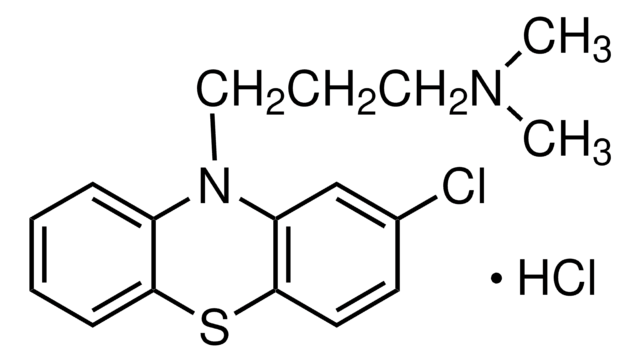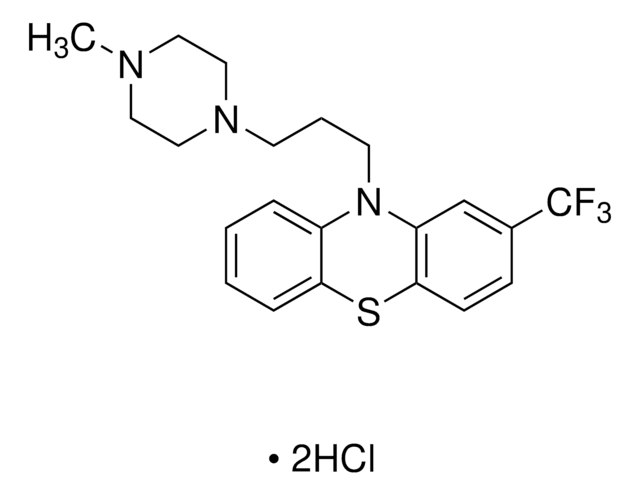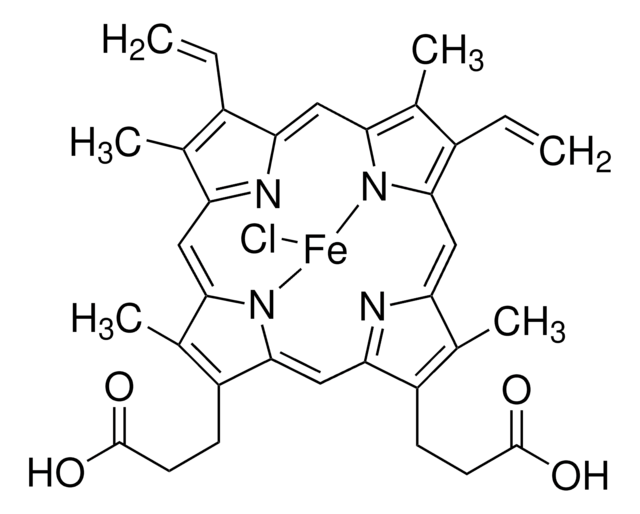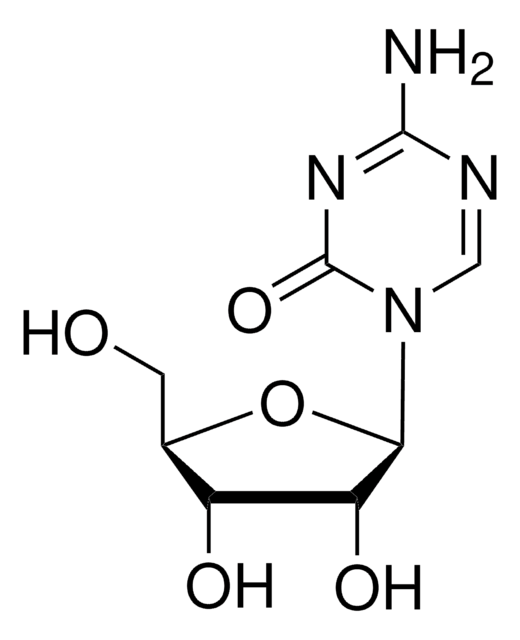P6402
Perphenazine
Sinonimo/i:
4-[3-(2-Chloro-10H-phenothiazin-10-yl)propyl]-1-piperazineethanol
About This Item
Prodotti consigliati
Stato
powder
Livello qualitativo
Ideatore
Schering Plough
Temperatura di conservazione
2-8°C
Stringa SMILE
ClC(C=C1)=CC2=C1SC3=CC=CC=C3N2CCCN4CCN(CCO)CC4
InChI
1S/C21H26ClN3OS/c22-17-6-7-21-19(16-17)25(18-4-1-2-5-20(18)27-21)9-3-8-23-10-12-24(13-11-23)14-15-26/h1-2,4-7,16,26H,3,8-15H2
RGCVKNLCSQQDEP-UHFFFAOYSA-N
Informazioni sul gene
human ... ADRA1A(148) , ADRA1B(147) , ADRA1D(146) , ADRA2A(150) , ADRA2B(151) , ADRA2C(152) , DRD2(1813) , OPRS1(10280)
Cerchi prodotti simili? Visita Guida al confronto tra prodotti
Descrizione generale
Azioni biochim/fisiol
Caratteristiche e vantaggi
Avvertenze
Warning
Indicazioni di pericolo
Consigli di prudenza
Classi di pericolo
Acute Tox. 4 Oral - Skin Sens. 1
Codice della classe di stoccaggio
11 - Combustible Solids
Classe di pericolosità dell'acqua (WGK)
WGK 3
Scegli una delle versioni più recenti:
Possiedi già questo prodotto?
I documenti relativi ai prodotti acquistati recentemente sono disponibili nell’Archivio dei documenti.
I clienti hanno visto anche
Articoli
Sigma-Aldrich presents an article about how proliferatively active cells require both a source of carbon and of nitrogen for the synthesis of macromolecules. Although a large proportion of tumor cells utilize aerobic glycolysis and shunt metabolites away from mitochondrial oxidative phosphorylation, many tumor cells exhibit increased mitochondrial activity.
Il team dei nostri ricercatori vanta grande esperienza in tutte le aree della ricerca quali Life Science, scienza dei materiali, sintesi chimica, cromatografia, discipline analitiche, ecc..
Contatta l'Assistenza Tecnica.







